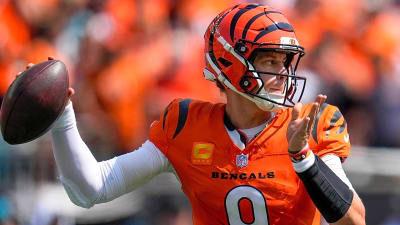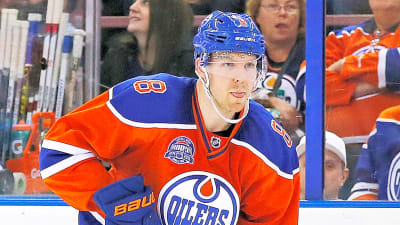Imagine holding a sliver of hoops history in your hand, a card that once sold for more than a luxury car, all because it captures a player's incredible skills. That is the magic of basketball cards, where nostalgia meets big bucks. From dusty attics to high-stakes auctions, these collectibles have turned fans into investors. In this piece, we'll unpack the 10 most expensive basketball cards ever sold, drawing from auction records and market trends. You'll get the facts straight: sale prices, what makes them tick, and simple advice for dipping your toes in without getting soaked. No jargon here-just the real story of why Michael Jordan's shadow still looms largest, and how newcomers like you can spot value in the stack. And let's be honest, in a world that's always rushing, these cards remind us to slow down and celebrate the game we love.
What Drives Basketball Card Values?
The value of basketball cards is driven by several major factors: player performance, rarity, and demand. Cards featuring star players, especially Hall of Famers or current superstars, generally command higher prices because of their popularity and emotional attachment to their careers. Rarity is also a crucial factor; cards that have a low print run, are of limited edition, or have special variations can hold premium values. Finally, the condition of the card itself has much to do with its value, especially graded cards in mint condition. Current market trends can also allow these values to fluctuate, such as memorabilia related to significant points in a player's career or changes in collector interest. In summary, this is what drives a market filled with nostalgia, investment potential, and allure regarding the game itself-a constantly evolving landscape of basketball card valuations.
The Role of Condition and Grading
The value of basketball cards is determined by numerous critical factors that include player performance, rarity, and demand. Cards of superstar players, especially Hall of Famers or current superstars, usually fetch higher prices due to their popularity and the emotional connection to their careers. Rarity is another critical factor that considers limited-edition cards, those with a low print run, or unique variations. Card conditions greatly count in value determination, and graded cards in mint condition are more desirable. Trends in the market, such as memorabilia tied to significant moments in a player's career or changes in collector interests, can result in values going up or down. Ultimately, the combination of nostalgia, investment potential, and the allure of the game itself drives the ever-evolving landscape of basketball card valuations.
- Start with the basics: Cards are graded on a 1-10 scale by pros like PSA or BGS—think of it as a report card for wear and tear. A PSA 10 (gem mint) can fetch 10 times what a PSA 7 does, because collectors tend to avoid flaws like centering issues or edge dings.
- Real talk: Even a beat-up Jordan rookie from 1986 can hit five figures if the story's right, but grading protects your investment—send yours in early.
- Pro tip for beginners: Consider buying slabbed (encased) cards; it reduces the risk of fakes and boosts resale value.
Rarity, Patches, and Player Legacy
Rarity, patches, and player legacies each have their effect on basketball cards' values, but in somewhat different ways. Rarity refers to the fact that there are not many copies of a specific card available. This can significantly increase the desirability of a card and make it substantially more valuable than those from larger print runs or special editions. Patches, particularly those from game-worn jerseys or autographed cards, provide collectors with a tangible link to the game and its stars, creating spikes in value due to their unique characteristics. Finally, there is player legacy: cards featuring iconic athletes like Michael Jordan or LeBron James come with both historical significance and huge fan followings, keeping their value robust. These facets combined create a dynamic landscape of changing values for basketball cards, with rarity, uniqueness, and the enduring qualities of star players.
- Rarity rules: One-of-ones like Logoman patches (from game jerseys) scream exclusivity. Because there is only one, bids explode.
- Player impact matters: Jordan's global icon status adds premium; Curry's shooting era vibe does the same for moderns. But it's not just fame, it's the "what if" of their careers that hooks us.
- Emotional pull: These aren't stocks; they're heirlooms. A LeBron patch feels like holding his rookie-year promise.
The All-Time Record Holder: Jordan and Bryant Dual Logoman
The extremely rare, dual Logoman card of basketball legends Michael Jordan and Kobe Bryant had made headlines as it became one of the highest-priced basketball cards ever sold, reaching $2.7 million during an auction. This unprecedented sale shows not only how much value can be attached to a rare and unique collectible but also the legacies of two of the sport's greatest icons. The Logoman cards display a piece of the players' game-worn jerseys and, therefore, symbolize a special connection with the players' careers and achievements. Given the rarity of this particular card, being only one of two in existence, with the additional mythic status of both players, it represents a pinnacle that collectors can reach. In the wake of the sale, interest in high-value basketball cards has been revitalized, demonstrating just how highly exceptional pieces can fetch in the marketplace.
Sale Details and Auction Buzz
- Sold for $12,932,000 in August 2025 at Heritage Auctions, the highest for any basketball card topping even baseball legends. This 2007-08 Upper Deck Exquisite 1/1 features dual autographs and Logoman patches from both GOATs.
- Bidding frenzy: Started hot, hit $5M mid-week, then surged in overtime—shows how legends cross eras to create hype.
- Why it matters: Blends Jordan's '90s dynasty with Bryant's Mamba mentality; collectors see it as the ultimate crossover.
Why This Card Redefined the Hobby
- Beyond price: It proves dual-player cards can eclipse singles, especially with autographs (both 10/10).
- Market shift: Post-sale, similar hybrids jumped 20-30% in value—watch for more Kobe-Jordan mashups.
- Beginner angle: If you're chasing dreams, study this; it teaches patience in auctions.
Modern Icons: Curry, LeBron, and Doncic Rookies
Due to their outstanding performances and continued ability to amaze fans, superstar basketball players like Stephen Curry, LeBron James, and Luka Doncic's rookie cards are incredibly in demand. Curry changed the game of basketball with his shooting ability that nobody had ever seen before, which helped him gain an ultimate following of fans, increasing his rookie card values immensely. LeBron is typically considered one of the best players to ever touch a court and has been putting up incredible performances, making his rookie cards one that any serious collector needs to have. At the same time, Luka Doncic's early career success and his skill set have made him a phenomenon in the NBA, drawing both fans and collectors alike. All these combine with the rarity, condition, and significance of the cards and the players' legacies to create a storm of demand that keeps these cards of immense value in the sports memorabilia market.
Stephen Curry's $5.9M Game-Changer
- 2009-10 Panini National Treasures Logoman autograph rookie: Private sale in 2021, PSA 8/10 auto—revolutionized values for shooters.
- Backstory: Pulled during a live break, it captured Curry's underdog rise; the patch from a Warriors jersey adds sweat-soaked authenticity.
- Legacy boost: As three-pointers become more prevalent, this card's value increases by 50%.
LeBron and Luka's Rookie Milestones
- LeBron's 2003-04 Upper Deck Exquisite patch auto (/23): $5.2M in 2021, BGS 9, his Hypebeast entry still echoes.
- Luka's 2018-19 National Treasures Logoman: $4.6M in 2021, the euro-star breakout that globalized the market.
- Common thread: Rookies with patches predict GOAT potential, buy young talents wisely.
Timeless Legends: More Jordan, Kobe, and Beyond
Kobe Bryant and Michael Jordan are legendary figures in basketball, and their influence on the sport and the sports card market is unmatched. Michael Jordan is widely regarded as the greatest basketball player of all time. His incredible skills, drive to win, and unforgettable plays, especially during his championship victories with the Chicago Bulls, have changed the way basketball is played. His rookie cards, specifically the 1986 Fleer, have become among the most desired collectibles, fetching dizzying auction prices.
Similarly, Kobe Bryant was a relentless competitor and a five-time NBA champion; his legacy in the hearts of fans and collectors alike is pretty much sealed. His rookie cards, along with other cards highlighting memorable moments from his career, continue to rise in value due to growing nostalgia and the continued love for his skill and tenacity.
Both Jordan and Bryant defined not only basketball excellence but the standard for card values, making them central figures in the hobby for both veteran and new collectors.
Standalone Jordan and Kobe Powerhouses
- Jordan's 1986 Fleer rookie auto PSA 9: $2.7M in October 2025, his Bulls magic endures.
- Kobe's 1996-97 Topps Chrome refractor BGS 10: $1.29M in 2021, a Black Mamba gem from his debut days.
- Auction insight: These hit peaks during anniversaries; time your buys around them.
Emerging Contenders Like Giannis and Wemby
- Giannis' 2013-14 National Treasures Logoman: $1.795M in 2021. The Greek Freak's rise mirrors Luka's.
- Victor Wembanyama's 2023 Prizm Nebula 1/1: $860K recently, hinting at future fireworks.
- For you: Track rookies now; today's $500 pull could be tomorrow's million.
Beginner Tips for Entering the Market
The basketball card market is an exciting journey for any beginner. First, start by reading up on the different types of cards available, including rookie cards, autographs, and limited editions. Understand the players themselves and their importance, as some athletes can easily double or triple the value of their cards. Before you begin collecting, set a budget so that you do not overspend your means. You might also find that you get satisfaction from focusing on specific players or teams to guide your collection. Connect with local card shows and online forums for discussions with other collectors, and gather valuable insights on the market. Lastly, be very attentive to grading and card condition, as these aspects can significantly impact the price. Enjoy the process and remember that collecting is about passion just as much as it is about potential investment.
Building Smart Without Breaking the Bank
- Start small: Hunt eBay watched lists for under-$100 graded commons—learn the ropes.
- Tools to use: Apps like Card Ladder for price history; avoid ungraded lots.
- Risk check: Market dips happen—buy what you love, not just for flips.
Spotting Fakes and Protecting Value
- Red flags: Too-good deals or missing holograms—stick to auctions like Goldin.
- Storage matters: Acid-free sleeves and top-loaders help maintain pristine condition.
- Long game: Hold legends; trade moderns as careers peak.
These cards aren't just expensive, they serve as connections to the very essence of basketball, from Jordan's fadeaways to Wemby's incredible dunks. Whether it's the excitement of a $13 million bid or your first $20 purchase, this hobby is about connection, not just cash. If this piqued your interest, consider grabbing a starter pack or checking out an auction site today. What's your ultimate collectible? Share in the comments— we're all in this together. Start collecting wisely, and who knows? Your collection might make history someday.
People Also Ask:
- Q. What is the most expensive basketball card ever sold?
A. The 2007-08 Upper Deck Exquisite dual Logoman of Michael Jordan and Kobe Bryant sold for $12,932,000 in 2025—it's a one-of-one with autographs and game patches that captures two eras. For beginners, it serves as a reminder that rarity plus legacy equals records. - Q. How do basketball card values get determined?
A. Values come from auctions, grading (PSA/BGS scores), and demand—condition is king, but player stories drive bids. A mint rookie can jump from thousands to millions overnight. - Q. What's a Logoman card, and why is it so valuable?
A. A Logoman is a one-of-one patch from an NBA logo on a jersey, sewn into premium sets like National Treasures. Their scarcity makes them holy grails, as seen with Curry's at $5.9 million. - Q. Can beginners afford valuable basketball cards?
A. Absolutely—start with graded commons under $50 on eBay. Focus on rising stars; today's bargain could be tomorrow's windfall, but always verify authenticity first. - Q. Which player has the most expensive cards overall?
A. Michael Jordan leads with multiple seven-figure sales, like his $2.7M Fleer auto. His cultural influence remains steady, even decades later. - Q. Are basketball card prices still rising in 2025?
A. Yes, with new records like the Jordan-Bryant sale, but dips happen. Evergreen legends hold best for long-term plays.
More must-reads:
- Do Knicks have interest in Mavericks' Anthony Davis?
- Rockets to be without star Kevin Durant for next two games
- The '2025 NFL draft QB class' quiz
Breaking News
Trending News
Customize Your Newsletter
 +
+
Get the latest news and rumors, customized to your favorite sports and teams. Emailed daily. Always free!








